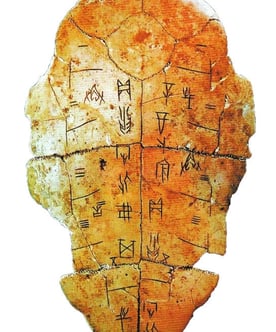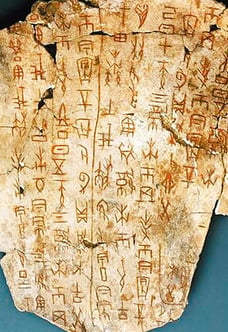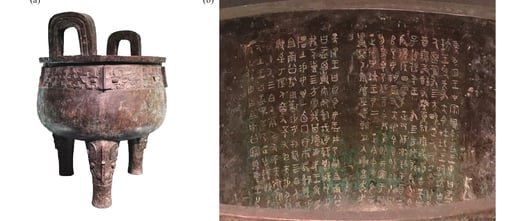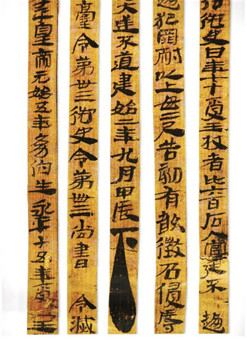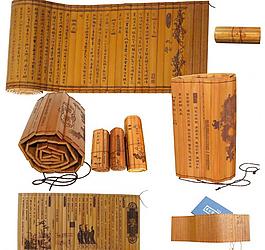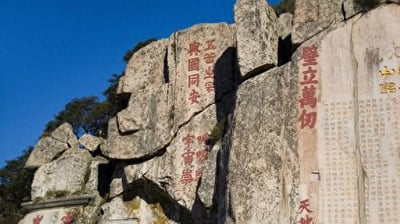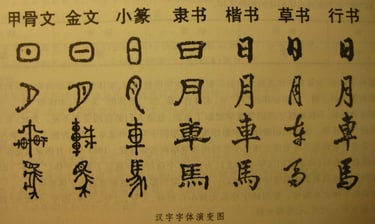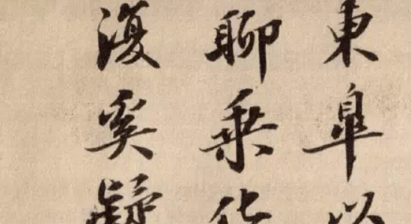







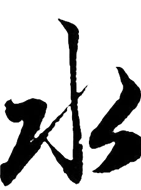

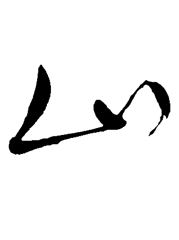





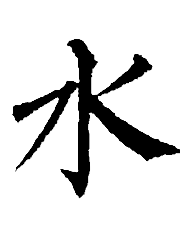

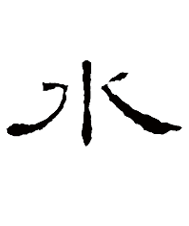

Mountain Water Mountain Water Mountain Water Oracle Bone Scripts Seal Scripts Clerical Script
Mountain Water Mountain Water Mountain Water
Cursive Scripts Running Scripts Standard Scripts
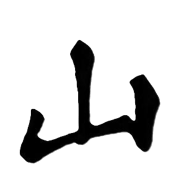

The Evolution of Chinese Calligraphy: Tracing the Soul of a Civilization
Oracle Bone Script: The Dawn of Writing
Over 3,000 years ago, during the Shang Dynasty (c. 1600-1046 BCE), the earliest known Chinese characters emerged—oracle bone script (甲骨文). Born from the royal obsession with divination, these inscriptions were carved onto tortoise shells and animal bones to record sacred rituals and royal decisions. The characters were thin and angular, shaped by the rigid tools of the time. Though primitive in form, they marked the birth of the Chinese writing system and laid the cornerstone for all future development.
Small Seal Script: Standardization and Unity
In the wake of unification under Emperor Qin Shihuang (259-210 BCE), China witnessed its first major script reform. Led by the chancellor Li Si, the small seal script (小篆) standardized the previously diverse character forms. Rounded and elongated, this script reflected both the centralized power of the Qin dynasty (221–206 BCE) and a refined sense of visual harmony. Its uniform structure greatly enhanced communication across the vast empire, facilitating cultural and administrative integration.
Clerical Script: Simplicity Meets Function
With the rise of the Han Dynasty (206 BCE-220 CE) came the evolution of clerical script (隶书), a more practical and efficient style adapted from seal script. Characters became flatter and strokes more angular, allowing for quicker writing. Its adoption accelerated literacy and record-keeping, supporting the flourishing of Han culture and governance. At the same time, its distinct brush techniques laid the groundwork for the expressive potential of calligraphy as an art form.
Cursive Script: The Art of Speed and Spirit
As society advanced, so did the desire for faster, freer forms of writing. Cursive script (草书) emerged as a bold departure—characters became simplified, strokes flowed together, and personal expression came to the forefront. From zhangcao (章草) to jincao (今草) and eventually wild cursive (狂草), this style showcased the emotional and spontaneous side of calligraphy. It was not just writing—it was performance on paper.
Regular Script: The Foundation of Form
During the Wei, Jin, and Southern and Northern Dynasties (220-589 CE), regular script (楷书) rose to prominence. With its square structure and clear strokes, it balanced precision with beauty and became the standard for formal writing. Drawing from clerical script, it emphasized symmetry and legibility. More than a functional style, it became a model of order, discipline, and cultural continuity, setting the foundation for future generations.
Running Script: Harmony in Motion
Bridging the order of regular script and the freedom of cursive, running script (行书) emerged as the most versatile and commonly used form. It combines structure with movement, creating a graceful rhythm that is both efficient and expressive. Its emergence represents a balance between practicality and artistry—between clarity and emotion.
From bone to bronze, from rigid formality to expressive flourish, the evolution of Chinese calligraphy is the story of a civilization in motion. Each script carries the imprint of its time, reflecting shifts in thought, culture, and aesthetics. Today, when we admire the beauty of these ancient scripts, we are not only witnessing an art form—we are listening to the heartbeat of Chinese history.
